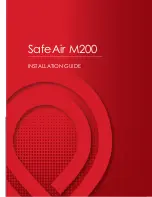
8
7
GrandCanyonGasLogs.com
L.P. GAS APPLICATIONS
To avoid possible injury, fire and explosion, please read and
follow these precautions and all instructions on appliance
before lighting the pilot. L.P. (Propane) gas is heavier than air
and will remain at floor level if there is a leak. Before lighting,
sniff at floor level. If you smell gas, follow these rules:
1. Get all people out of building.
2. DO NOT light matches. DO NOT turn electrical lights
or switches on or off in area. DO NOT use an electric
fan to remove gas from area.
3. Shut off gas at L.P. tank outside of building.
4. Telephone gas company and fire department.
Ask instructions. Before hanging up, give your name,
address, and phone number.
DO NOT go back into the building. If help is coming, wait for
them to arrive.
If L.P. tank runs out of fuel, turn off gas appliance. After L.P.
tank is refilled, appliance must be relit according to manufac-
turer’s instructions. If the gas control has been exposed to
WATER in any way, DO NOT try to use it. It must be re-
placed. DO NOT attempt repair on gas valve or appliance.
Tampering is DANGEROUS and voids all warranties.
WARNING
INSTALLATION
Coil the pilot tubing using proper bending techniques
and insert the ¼
"
flare end into the “PILOT” connec-
tion on the valve. Wrench until tight. Fig. 5.
Coil the Thermopile lead and connect the terminals to
the valve. Color sequence does not matter, connect
(1) lead to the TP and (1) lead to the TH/TP. Fig. 6.
For remote or wall switch installation, connect the
ends of the terminal to the TH and the TH/TP
connection on the valve. Fig. 7.
FIG 5
FIG 6
FIG 7


































